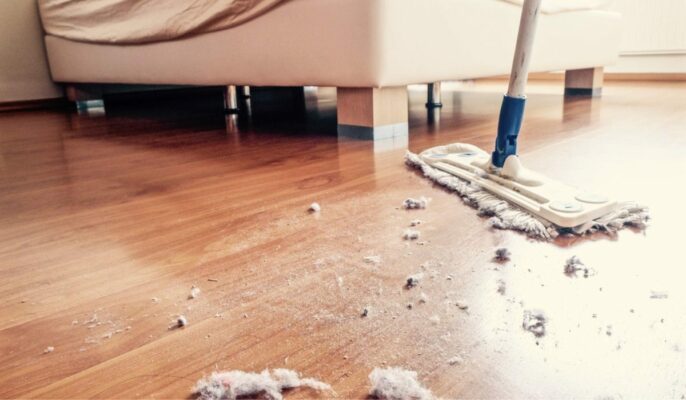Maintaining a dust-free home is not only essential for aesthetic reasons but also crucial for your health. Dust particles can harbour allergens, irritants, and even toxins, contributing to respiratory issues and other health problems. To create a healthier living space and reduce the need for constant cleaning, follow these detailed tips on how to avoid dust in your home. In this comprehensive guide, we delve into the details of creating an environment that minimises dust, ensuring cleanliness and focusing on avoiding dust in your home to maintain a healthier living space.
See also: 15 essential cleaning tools for home
Establish a cleaning routine
- Regularly dust surfaces using microfiber cloths that trap and hold dust particles.
- Vacuum carpets, rugs, and upholstery at least once a week using a vacuum cleaner with a HEPA filter.
- Wash bedding, curtains, and other fabric items regularly.
Use high-quality air filters
- Install High-Efficiency Particulate Air (HEPA) filters in your HVAC system to capture tiny particles, including dust.
- Change air filters according to manufacturer recommendations to ensure optimal performance.
Keep windows closed
- While fresh air is essential, keeping windows closed during peak pollen seasons can prevent outdoor dust from entering your home.
- Use window screens to reduce the entry of dust particles while allowing ventilation.
Invest in air purifiers
- Place air purifiers in commonly used rooms to filter out airborne particles, including dust.
- Choose cleaners with HEPA filters and consider the size of the room for optimal efficiency.
Control humidity levels
- Maintain indoor humidity between 30% and 50% to prevent dust mites and mould growth.
- Use dehumidifiers in damp areas like basements to reduce moisture.
Choose dust-resistant furniture
- Opt for furniture with smooth surfaces that are easier to clean.
- Select furnishings with tight weaves, leather, or vinyl upholstery that are less likely to trap dust.
Organise and declutter
- Minimise the number of items on shelves and surfaces to reduce space for dust to accumulate.
- Regularly declutter and organise belongings to make cleaning more efficient.
Seal cracks and gaps
- Inspect windows, doors, and walls for gaps that may allow dust from outside to enter.
- Use weather stripping and sealants to close any openings.
Implement a no-shoes policy
- Encourage family members and guests to remove shoes at the entrance to prevent tracking in outdoor dust.
- Place doormats both inside and outside to capture dirt and dust.
Regularly clean ventilation systems
- Clean and dust vents, ducts, and exhaust fans to prevent the circulation of dusty air.
- Schedule professional HVAC duct cleaning if necessary.
FAQs
Why is it important to maintain a dust-free home?
Maintaining a dust-free home is essential for both aesthetics and health. Dust can contain allergens, irritants, and toxins that may contribute to respiratory issues and other health problems.
How often should I dust my home?
Dust surfaces in your home at least once a week using microfiber cloths to trap and remove particles. High-traffic areas and frequently used spaces may require more frequent dusting.
What type of vacuum cleaner is best for reducing dust?
Choose a vacuum cleaner equipped with a HEPA filter to effectively capture and retain small dust particles. Vacuum carpets, rugs, and upholstery weekly for optimal results.
Can air purifiers help reduce dust in the home?
Yes, air purifiers with HEPA filters can effectively remove airborne particles, including dust, contributing to cleaner indoor air. Place them in commonly used rooms for maximum impact.
How do I control humidity levels to prevent dust mites and mould?
Maintain indoor humidity between 30% and 50%. Use dehumidifiers in damp areas, fix leaks promptly, and ensure proper ventilation to deter dust mites and mould growth.
What are some dust-resistant furniture options?
Opt for furniture with smooth surfaces, tight weaves, and leather or vinyl upholstery. These choices are less likely to trap and accumulate dust.
How can I seal gaps to prevent dust from entering my home?
Inspect windows, doors, and walls for gaps. Use weather stripping and sealants to close any openings, reducing the entry of outdoor dust.
| Got any questions or point of view on our article? We would love to hear from you. Write to our Editor-in-Chief Jhumur Ghosh at jhumur.ghosh1@housing.com |
